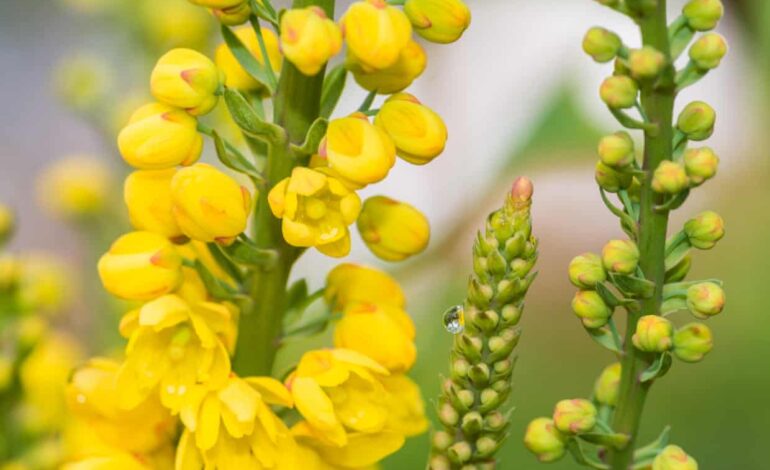Unique Flower Mechanics Engage Pollinators with Surprising Tactics

Flowers exhibit remarkable adaptations to engage pollinators, particularly through their male reproductive structures, known as stamens. Numerous plant species, including Berberis and Mahonia, utilize touch-sensitive stamen movements that enhance their reproductive success. These adaptations not only protect the plants’ resources but also facilitate effective pollination.
In the case of Berberis and Mahonia, the stamens are designed to interact with visiting insects. When an insect approaches to feed on nectar, the stamens bend and release pollen directly onto the insect’s face or tongue. This surprising tactic encourages brief visits from the pollinators, minimizing the potential loss of nectar and pollen. After this initial encounter, the insect typically seeks another flower where it can transfer the pollen to the female reproductive organs, thereby promoting cross-pollination.
The interaction is even more dramatic in the orchid Catasetum. When an unsuspecting insect lands on the flower, it is met with a quick and powerful response. Sticky pollen bags launch from the plant at remarkable speeds, often knocking the insect out of the flower while adhering pollen to its body. This method not only ensures pollen dispersal but also prepares the flower for future pollination events.
Another fascinating example can be found in Stylidium, commonly known as triggerplants. These unique Australian flowers feature club-shaped reproductive organs that execute a rapid swinging motion when touched. The club moves through a complete 180 degrees in just 10 milliseconds, delivering a swift pollen hit to any visiting insect. Following this action, the trigger resets itself almost instantaneously, ready for the next pollinator.
These intricate mechanisms highlight the sophisticated strategies plants employ to attract and effectively utilize pollinators. The ability of flowers to engage insects through rapid, touch-sensitive responses not only enhances their reproductive success but also underscores the complex relationships within ecosystems. The interactions between plants and their pollinators are vital for biodiversity and the health of various habitats.
As research into these mechanisms continues, it becomes increasingly clear that the dynamics of plant-pollinator interactions are far more elaborate than previously understood. This knowledge enhances our appreciation for the delicate balance of nature and the evolutionary adaptations that sustain it.






